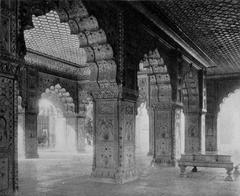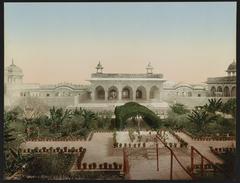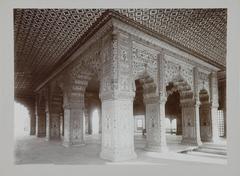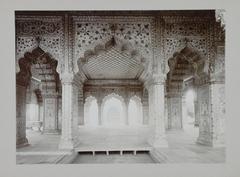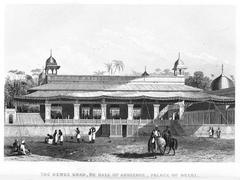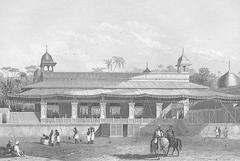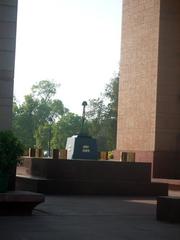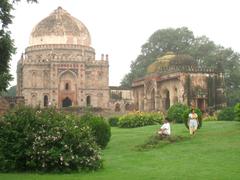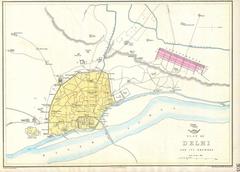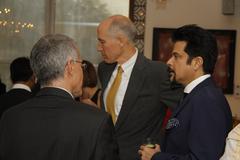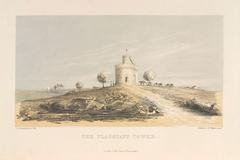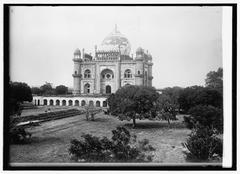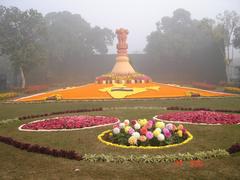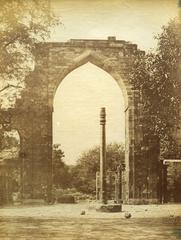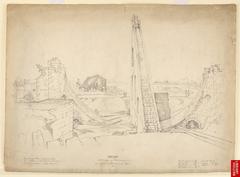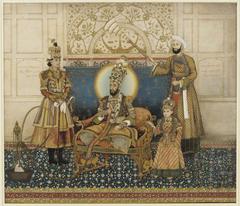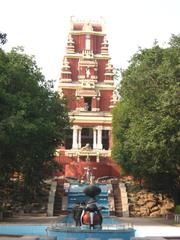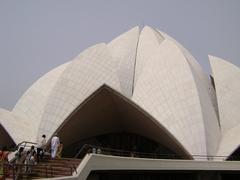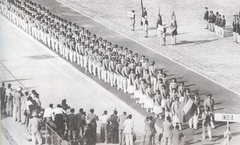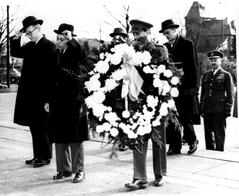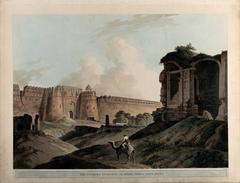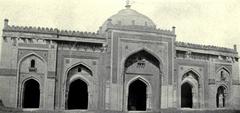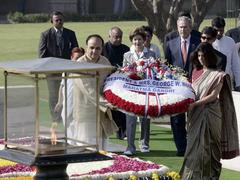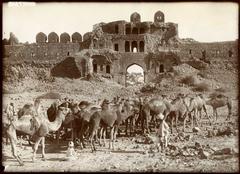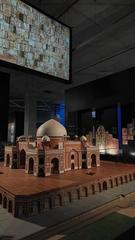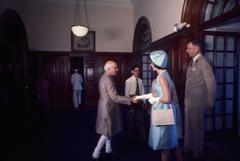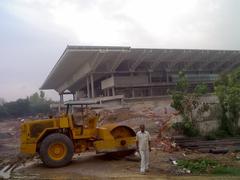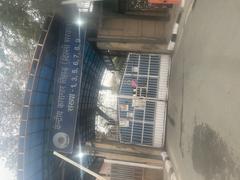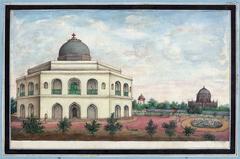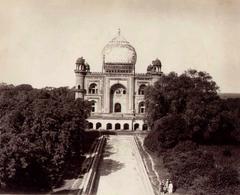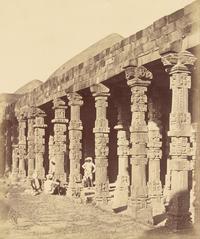
Comprehensive Guide to Visiting Diwan-I-Khas, New Delhi, India
Date: 17/08/2024
Introduction
The Diwan-I-Khas, also known as the Hall of Private Audiences, stands as one of the most significant and stunning structures within the Red Fort complex in New Delhi, India. Built by the Mughal Emperor Shah Jahan in 1648, it was designed to host private meetings with courtiers and esteemed state guests. This architectural marvel is a testament to the grandeur and opulence that characterized Mughal architecture, featuring intricate details and the use of precious materials. The hall’s historical significance is further underscored by its association with the legendary Peacock Throne, a jewel-encrusted seat of power that once dazzled onlookers with its splendor (Wikipedia). The Diwan-I-Khas not only serves as a monument to the architectural prowess of the Mughal era but also as a symbol of the rich cultural heritage of India. This comprehensive guide aims to provide detailed insights into the historical context, architectural details, visitor information, and much more, ensuring a fulfilling visit to this iconic landmark.
Table of Contents
- [Introduction](#introductionintroduction)
- [Historical Context and Construction](#historical-context-and-constructionhistorical-context-and-construction)
- [Architectural Design and Materials](#architectural-design-and-materialsarchitectural-design-and-materials)
- [The Peacock Throne](#the-peacock-thronethe-peacock-throne)
- [Inscriptions and Artistic Elements](#inscriptions-and-artistic-elementsinscriptions-and-artistic-elements)
- [Adjacent Structures and Layout](#adjacent-structures-and-layoutadjacent-structures-and-layout)
- [Restoration and Current State](#restoration-and-current-staterestoration-and-current-state)
- [Visitor Experience](#visitor-experiencevisitor-experience)
- [Architectural Influence](#architectural-influencearchitectural-influence)
- [FAQ](#faqfaq)
- [Conclusion](#conclusionconclusion)
- [Sources](#sourcessources)
Historical Context and Construction
Built in 1648 by the Mughal Emperor Shah Jahan, the Diwan-I-Khas was designed to host private audiences with courtiers and state guests. Its architectural design reflects the grandeur and opulence of Mughal architecture, characterized by intricate details and the use of precious materials (Wikipedia).
Architectural Design and Materials
The Diwan-I-Khas is a rectangular hall measuring 90 by 67 feet. The central chamber is surrounded by a series of arches rising from marble piers. The lower parts of these piers are inlaid with floral designs, while the upper portions are painted and gilded. The four corners of the roof are surmounted by pillared chhatris, adding to the aesthetic appeal of the structure. The hall’s ceiling, originally inlaid with silver and gold, was stripped bare due to successive financial crises faced by the empire. The current ceiling, installed in 1911, is a restoration effort to bring back some of the hall’s former glory. The interior was completely plundered following the Indian Rebellion of 1857, with the throne, carpets, and other items going missing. Recent restoration work has been done on the panels of inlay and has also reproduced the gilded pattern on one of the pillars fronting the hall (Wikipedia).
The Peacock Throne
One of the most notable features of the Diwan-I-Khas was the Takht-i-Taus or Peacock Throne, a jewel-encrusted throne commissioned by Shah Jahan. This throne was adorned with precious stones, including the famous Kohinoor diamond. The throne was carried away by Nadir Shah during his invasion of 1739 CE (Indian Culture).
Inscriptions and Artistic Elements
The walls of the Diwan-I-Khas contain inscriptions by the Persian poet Amir Khusrow, which aptly describe its unparalleled beauty: “If there be a paradise on earth, it is here, it is here, it is here.” These verses are inscribed over the two outer arches of the hall, adding a poetic touch to the architectural marvel. The hall also features the Stream of Paradise (Nahar-i-Bihisht), which flowed through the center of the hall, adding to the serene and divine atmosphere of the space. The building used to have red awnings or shamianas, which have since been lost (Wikipedia).
Adjacent Structures and Layout
Adjacent to the Diwan-I-Khas are the Emperor’s residential quarters known as the Khas Mahal, further divided into the Tasbih Khana or the private worship chamber, the Khwab Gah or the sleeping chamber, and the Baithak or the relaxation chamber. The Musamman Burj, a semi-octagonal tower with arched windows on the eastern wall of the Khwab Gah, was used by the emperor for the tradition of jharokha darshan or public appearance (Indian Culture).
Restoration and Current State
The Diwan-I-Khas has undergone several restoration efforts to preserve its architectural integrity. The panels of inlay have been restored, and the gilded pattern on one of the pillars has been reproduced. Despite these efforts, the hall today is only a shell of what it used to be, with many of its original elements lost to time and plunder (Wikipedia).
Visitor Experience
Visitors to the Diwan-I-Khas can marvel at the intricate marble inlay work and the grandeur of Mughal architecture. The hall’s historical significance and architectural beauty make it a must-visit for anyone exploring the Red Fort complex. The entry ticket to the Red Fort costs around INR 50, and an additional INR 80 is required to visit the newly-constructed museums that depict India’s war history over the past 160 years (LBB).
Visiting Hours: The Red Fort complex is open from 9:30 AM to 4:30 PM, Tuesday to Sunday.
Best Times to Visit: The best time to visit is during the cooler months from October to March.
Architectural Influence
The architectural style of the Diwan-I-Khas has influenced many subsequent structures in India and beyond. The use of marble, intricate inlay work, and the incorporation of poetic inscriptions are elements that have been emulated in various other monuments. The hall stands as a testament to the artistic and architectural prowess of the Mughal era.
FAQ
What are the visiting hours for Diwan-I-Khas?
The Red Fort complex, including Diwan-I-Khas, is open from 9:30 AM to 4:30 PM, Tuesday to Sunday.
How much are the tickets for Diwan-I-Khas?
The entry ticket to the Red Fort costs around INR 50, with an additional INR 80 required to visit the newly-constructed museums.
What are the best times to visit Diwan-I-Khas?
The best time to visit is during the cooler months from October to March.
Conclusion
The Diwan-I-Khas is not just a hall but a symbol of the opulence and grandeur of the Mughal Empire. Its architectural significance, historical context, and the stories it holds make it an essential part of India’s cultural heritage. Visitors to the Red Fort can experience a slice of history and marvel at the architectural brilliance that has stood the test of time.
References
- Wikipedia contributors. (n.d.). Diwan-i-Khas (Red Fort). Retrieved from Wikipedia
- Indian Culture. (n.d.). Red Fort: Enduring Symbol of India’s Sovereignty and Unity. Retrieved from Indian Culture
- Lonely Planet. (n.d.). Diwan-I-Khas. Retrieved from Lonely Planet
- The Wandering Quinn. (n.d.). Delhi Travel Tips for Tourists. Retrieved from The Wandering Quinn
- Misfit Wanderers. (n.d.). Fatehpur Sikri Travel Guide. Retrieved from Misfit Wanderers
- LBB. (n.d.). Red Fort Diwan-I-Khas Delhi. Retrieved from LBB
